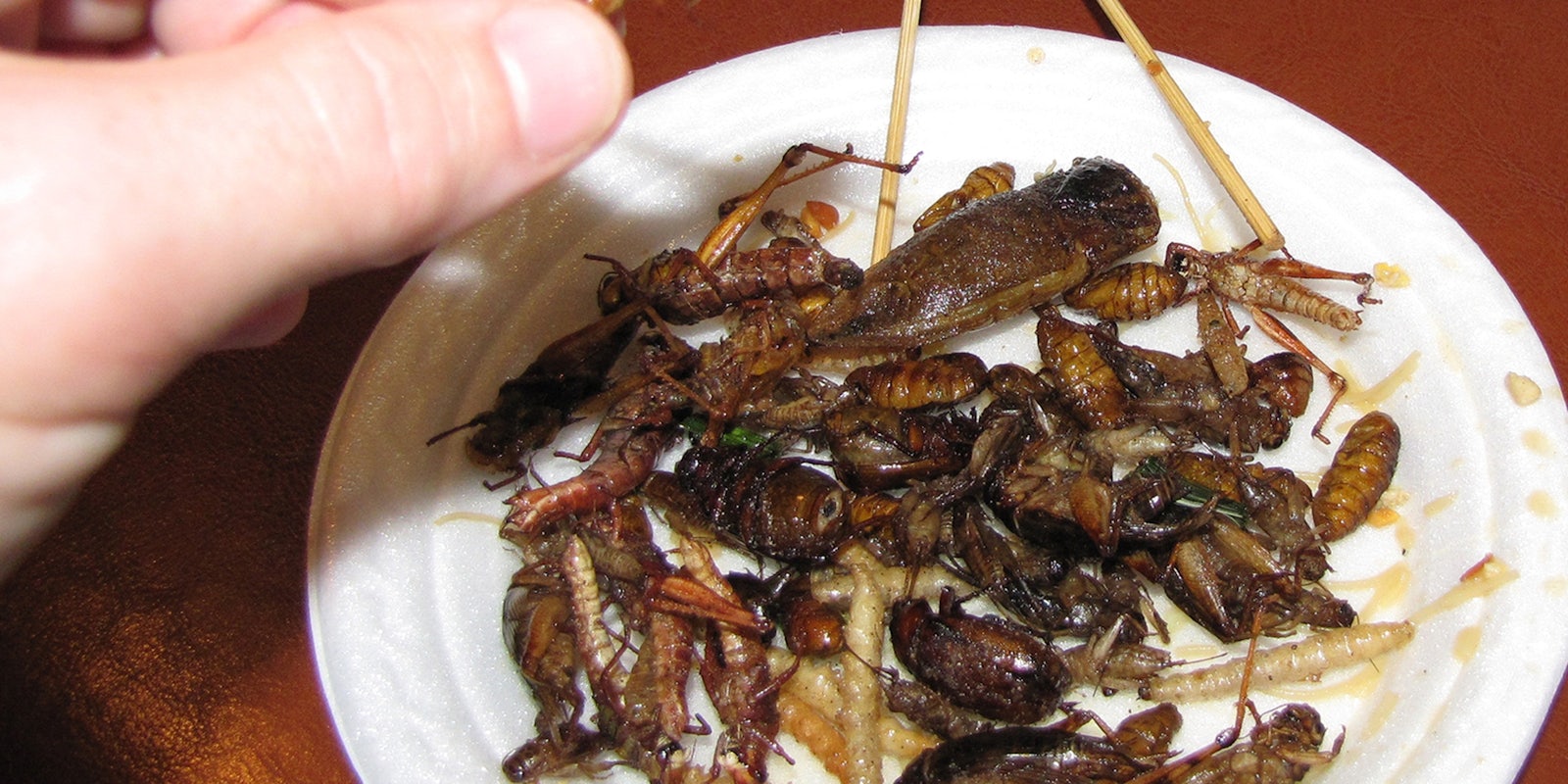There’s nothing like sitting down to a plate full of crickets and mealworms, spiced up with a few scorpions. By this point, science should have convinced you that eating more insects is a healthy option for you and for the planet, so let’s get down to it. This past month, I embarked on a quest to sample insects available to order from the wilds of the Internet.
Hotlix
My first taste test was (like an bug-eating noob) from Hotlix, a California-based insect snack and candy company. I ordered the mixed snack box of crickets, available for $36, because I was teaching a summer science class on insects to a group of 6- to 8-year-olds and I needed quantity.
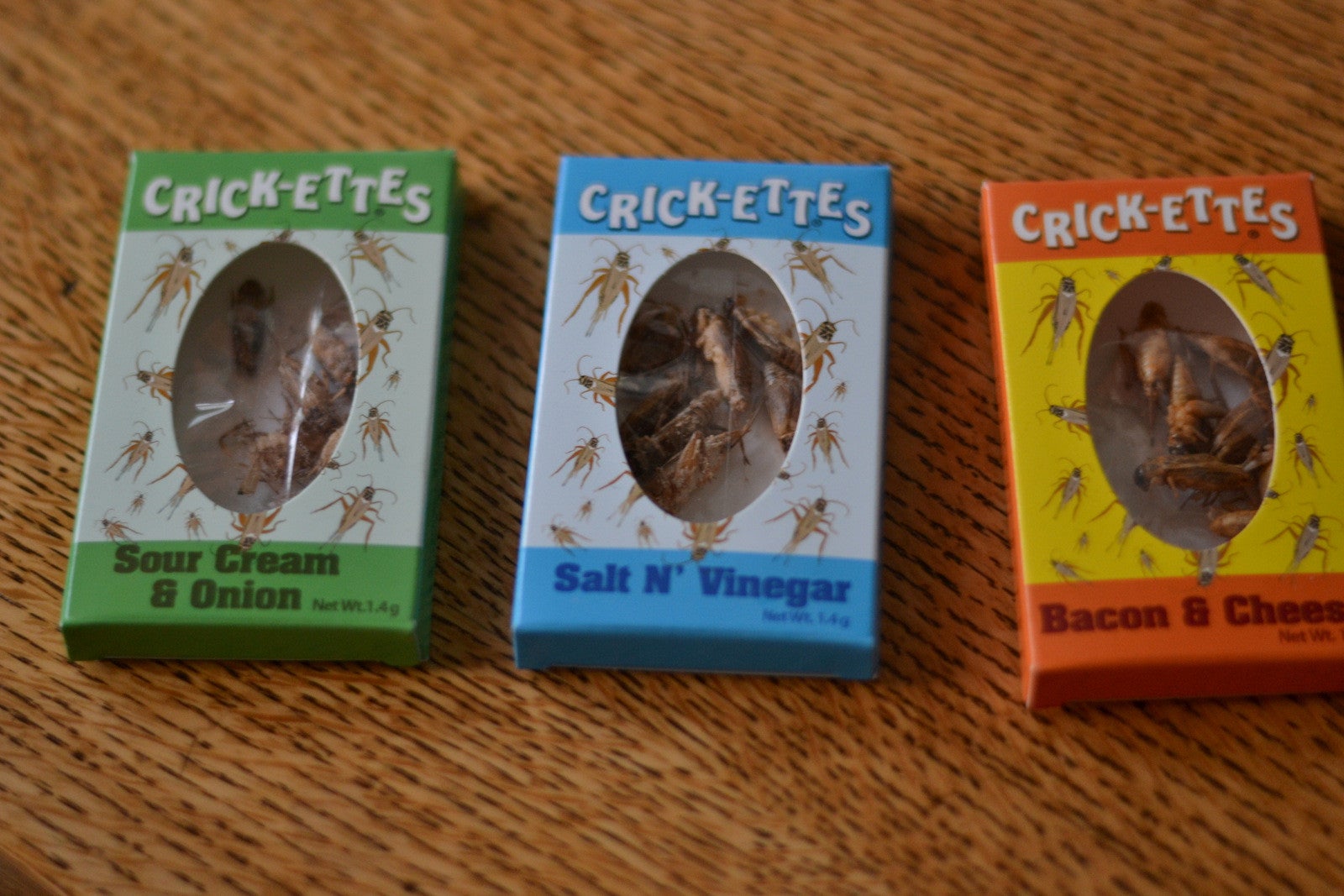
After doling the treats out to excited kids, I tasted the sour cream crickets. They were crispy and largely flavorless. Hmm—inoffensive, but disappointing. Not exactly what I remember from eating a freshly fried silkworm pupa in Thailand. The kids were totally thrilled. One girl said she wants to eat them all the time. A boy popped a bunch in one bite and declared his delight as insect bits sprayed from his mouth. Fortunately, we were outside.
Hopper Foods
The game got more serious with an email from Jack Ceadel, co-founder of an Austin, Texas-based startup hoping to sell energy bars made with cricket flour. He offered to send me some samples in the hopes that my article could give a boost to the company’s Kickstarter campaign. Hopper Foods hit its $30,000 goal, but still has until Aug. 22 to raise additional funds.
In a previous job as a water consultant, Ceadel came across a report from the Food and Agriculture Organization of the United Nations that emphasizes the environmental benefits of the world getting more protein from insects. Less land and less water would be needed to grow energy-rich food. “The water numbers blew my hair back,” he says. “I’m very aware of the troubles the U.S. faces in terms of agricultural water withdrawals.” Just look at the drought in California and the ongoing drought in the Southwest.
Ceadel explained that his startup’s mission is to normalize eating insects. “The medium of the energy bar was an obvious first step,” he said. “It can be used as a meal replacement, but it can also be very appealing to early adopters—particularly people involved in sports.”
The bars come in three flavors: peanut butter, cherry, and cacao; kale, green tea, seaweed, and ginger; and cranberry, blueberry, and pistachio.
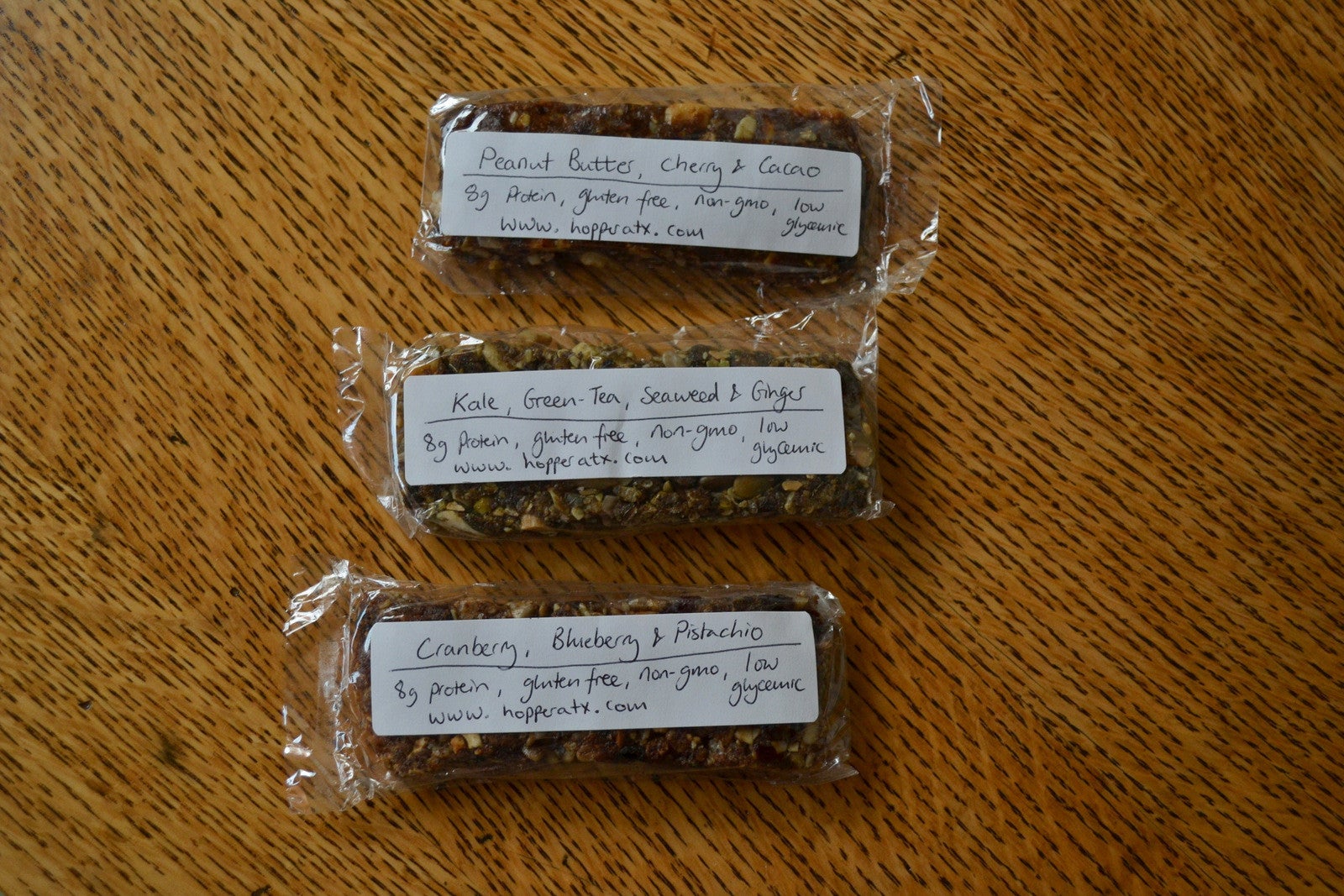
So I dug in. First, these are pretty attractive energy bars. You can actually see the ingredients—no vague protein chew here. There are nuts and dried fruit but absolutely no cricket legs to crunch on.
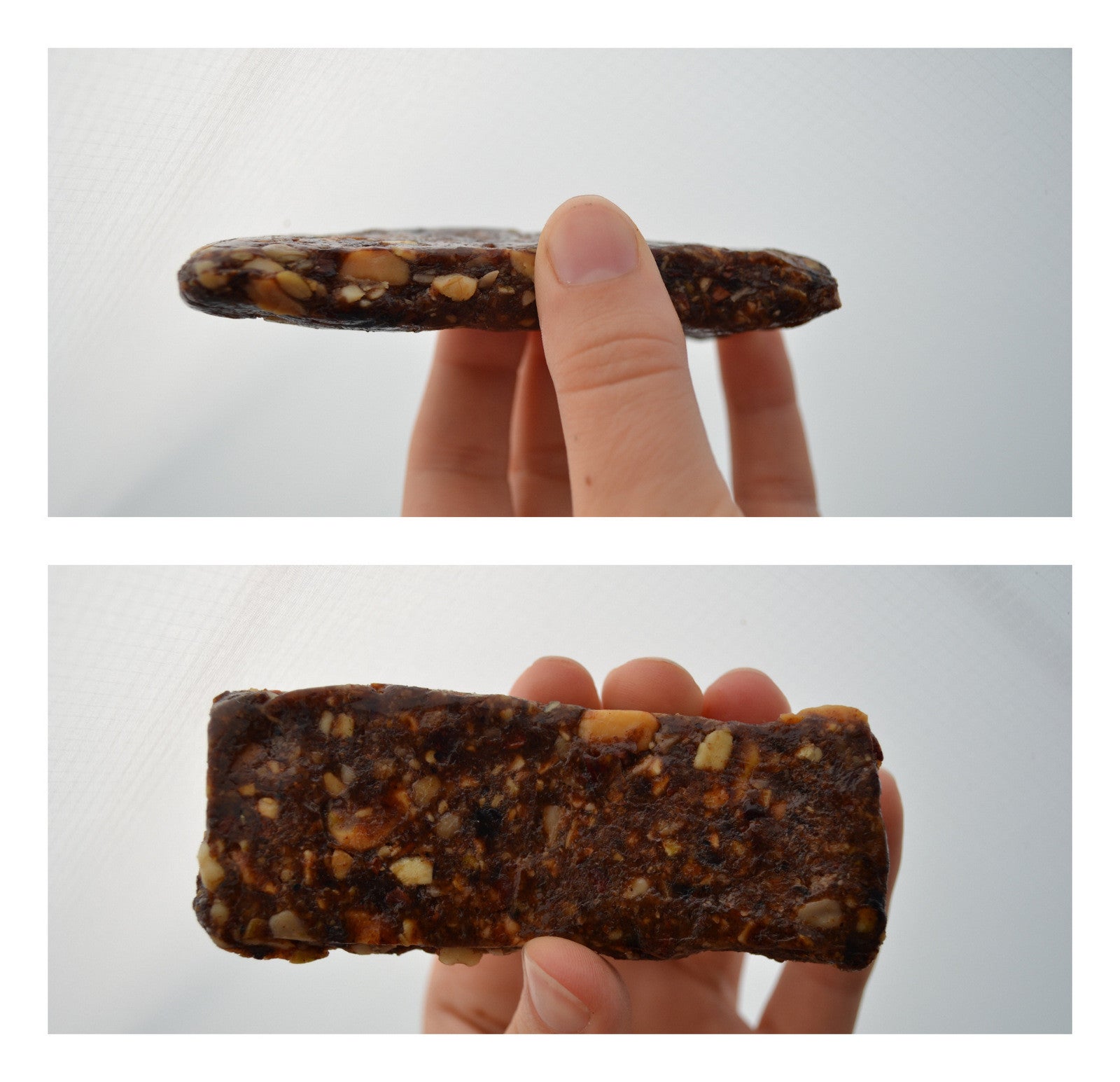
The cranberry, blueberry, and pistachio bar is super tasty, with tart and sweet berries and a decent amount of moisture without being tacky. The bar tastes healthy, but also like food—I’d eat it all the time.
I also love the slightly crumblier kale, green tea, seaweed, and ginger bar, which tastes hearty and slightly savory. It is salty, sweet, and a little bit briney; the aftertaste reminds me of halva. Finally, the peanut butter bar not too sweet either and made for a great camping breakfast.
“Middle America may take a while to catch on,” Ceadel said, “But, for want of a better word, the hipsters and young people are an easier sell.” Anecdotally, he estimates that only about 10 percent flatly refuse to eat insects, about 30 percent are initially resistant but can be talked into it, and the rest are game.
Hopper Foods’ Kickstarter campaign will allow the company to purchase a packaging machine, which it plans to make available to other Austin-area entomophagy businesses. “It is difficult to find packaging partners who will work with insect products,” Ceadel said. But he forecasts that Austin will become a hub for bug eating and bug-containing foods. He may not be wrong. Another company called Crickers has started up, specializing in crackers made with cricket flour.
WorldEnto
All this cricket flour is the key. Austin is also home to WorldEnto, the major supplier of edible insects in the U.S. and Little Herds, a nonprofit working to educate people about the benefits of insect eating. Both companies work with Hopper Foods to make the energy bars possible.
“We focus on crickets because they are the most sustainable,” WorldEnto founder Harman Johar said. Occasionally, his company will offer scorpions, meal worms, and tarantulas, but “crickets are more efficient at converting feed to protein,” he says. “They also exemplify the best of the idea—very little water, very little land.”
Johar started his company at 19, when he was attending the University of Georgia. How and why does a young guy start selling crickets from his dorm room? Johar explained that he was born into a relatively traditional Sikh family. “A huge part of our culture is food,” he said. Every Sikh temple has two parts of the communal gathering: the first is for prayer and the second is the “langar,” a kitchen that produces meals free to any visitor, regardless of background. The goal of the free kitchen is to establish equality among people. “The first place you start with equality is in the basic essentials of life,” Johar said. “I realized that I wanted to make a difference in world hunger.”
A visit from an expert on edible insects and a date where he was struck by the normalcy of eating sushi got the cogs turning in Johar’s brain. “I thought, ‘What will I be eating 30 years from today?’” he said. So he started a company to help people eat bugs. Eventually, WorldEnto moved to Austin and now supplies approximately 85 percent of the U.S. edible insect demand, Johar says.
Johar’s next steps include partnering with a Canada-based company, helping launch an entomophagy business incubator in Austin and aiding the creation of a large, organic cricket farm in the area. “Right now the farm where were are looking to build is actually right next door to an animal sanctuary,” he adds. “We will be growing crickets next to lions and tigers.”
And yes, he would send me some samples.
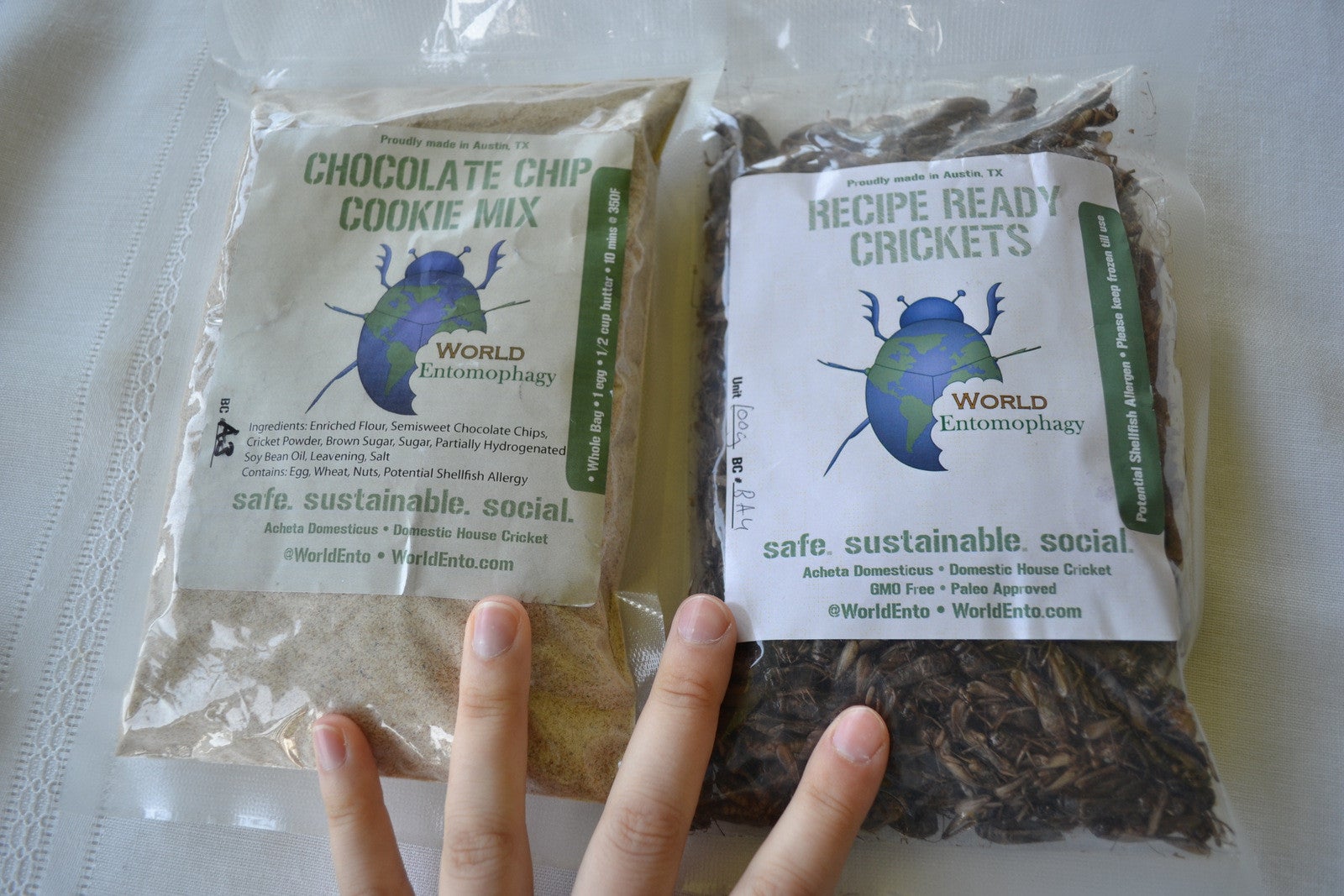
Naturally, I made the chocolate chip cookie mix with cricket flour first. The directions are super easy to follow and printed on the bag: Add one egg and a stick of butter (I melted mine) to the dry ingredients in the bag (includes flour, chocolate chips, cricket powder, brown sugar, soybean oil, leavening, and salt), mix, and bake at 350 degrees.
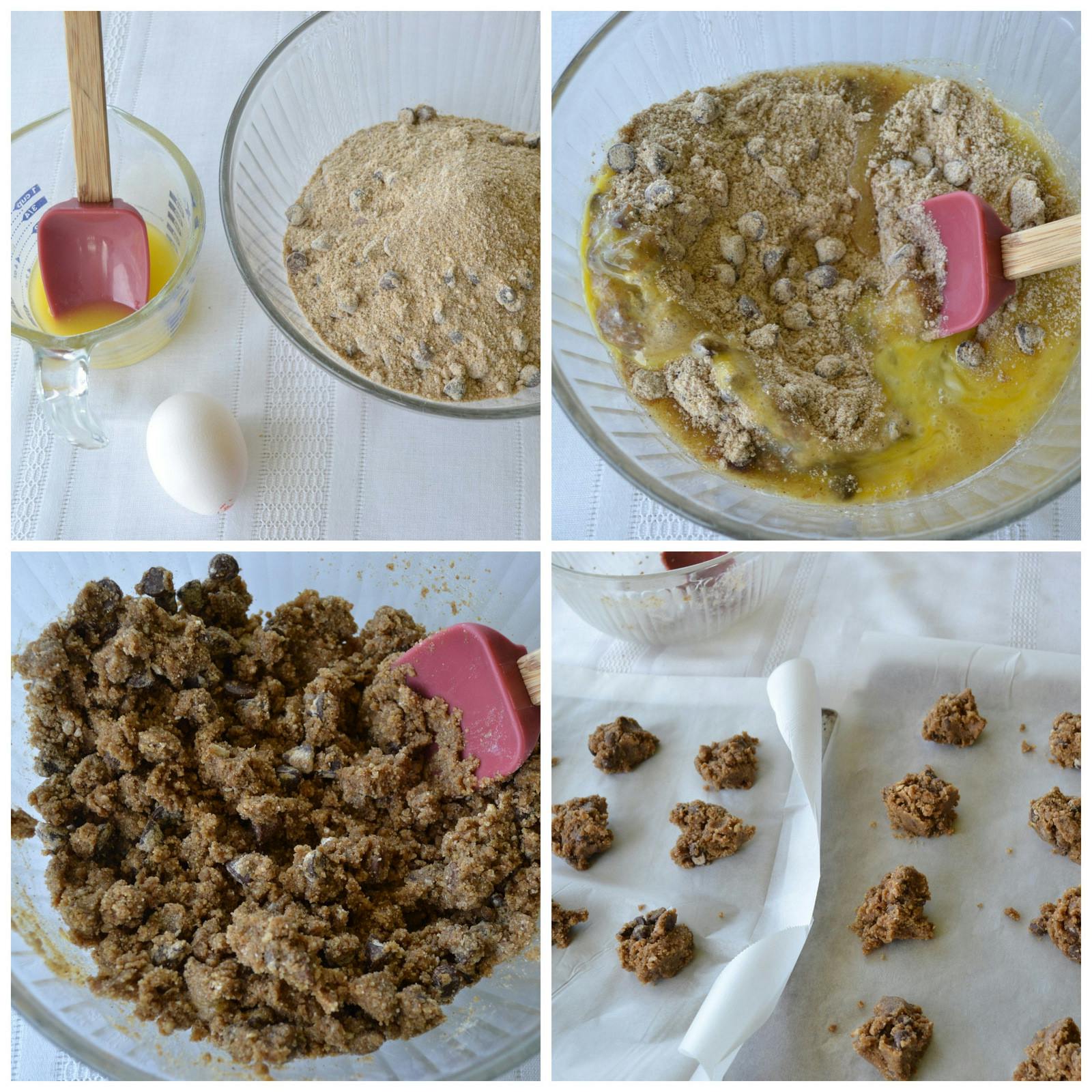
Soon I was eating “chocolate chirp” cookies. The mix is available for $15 plus shipping.
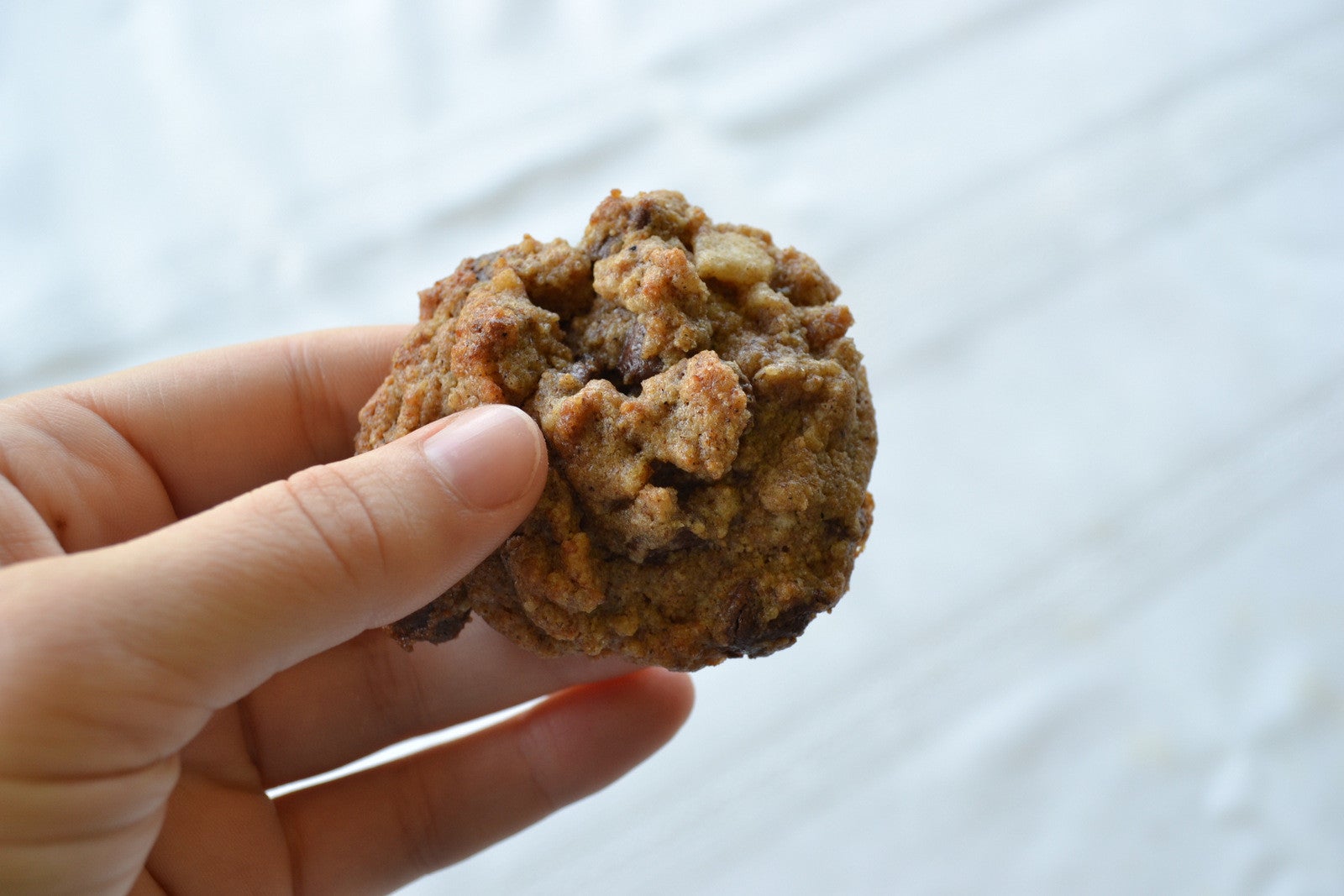
These cookies are good, and you wouldn’t know that you were eating anything out of the ordinary if someone didn’t tell you. I’m not a fan of making people unknowingly eat things they might not consent to eating, but it did happen. My insect-cookie baking happened during a visit to my parents’ home, and when you have cookies cooling on the counter, and your uncle and grandma drop by for a surprise visit, sometimes you just can’t get the information out there before one of them is chewing and saying “yum.” When I told them what they’d just eaten, neither was grossed out. (My dad, however, didn’t try any. He must be in that 10 percent.)
I did run into a problem with the WorldEnto crickets (100 grams for $9), but one entirely of my own fault. I attended a conference and was away from home for a week and half. During that time, the WorldEnto shipment sat in its box. After reading “treat like raw seafood” advice online while searching for recipes and the “refrigerate” markings on the package, I asked Johar if I should fry up the crickets. He told me no, emphatically. I wept, disappointed to miss this particular entomophagy opportunity. Sautéed crickets, cricket Pad Thai, freshly oven-roasted crickets—none of these would be mine, at least not today. I fed the over-ripe bugs to our chickens. Their review? Happy clucks. They consumed them with irrational exuberance and hubris at the thought that there will always be crickets that don’t leap away.
Still, thrilled with the results of my adventure so far, I set out a tasting panel of several other insects and asked my friends and siblings to weigh in.
Don Bugito
Don Bugito, a San Francisco-based company, offers several snacks through Etsy. I ordered the chocolate-covered salted crickets ($6) and spicy superworms ($5).
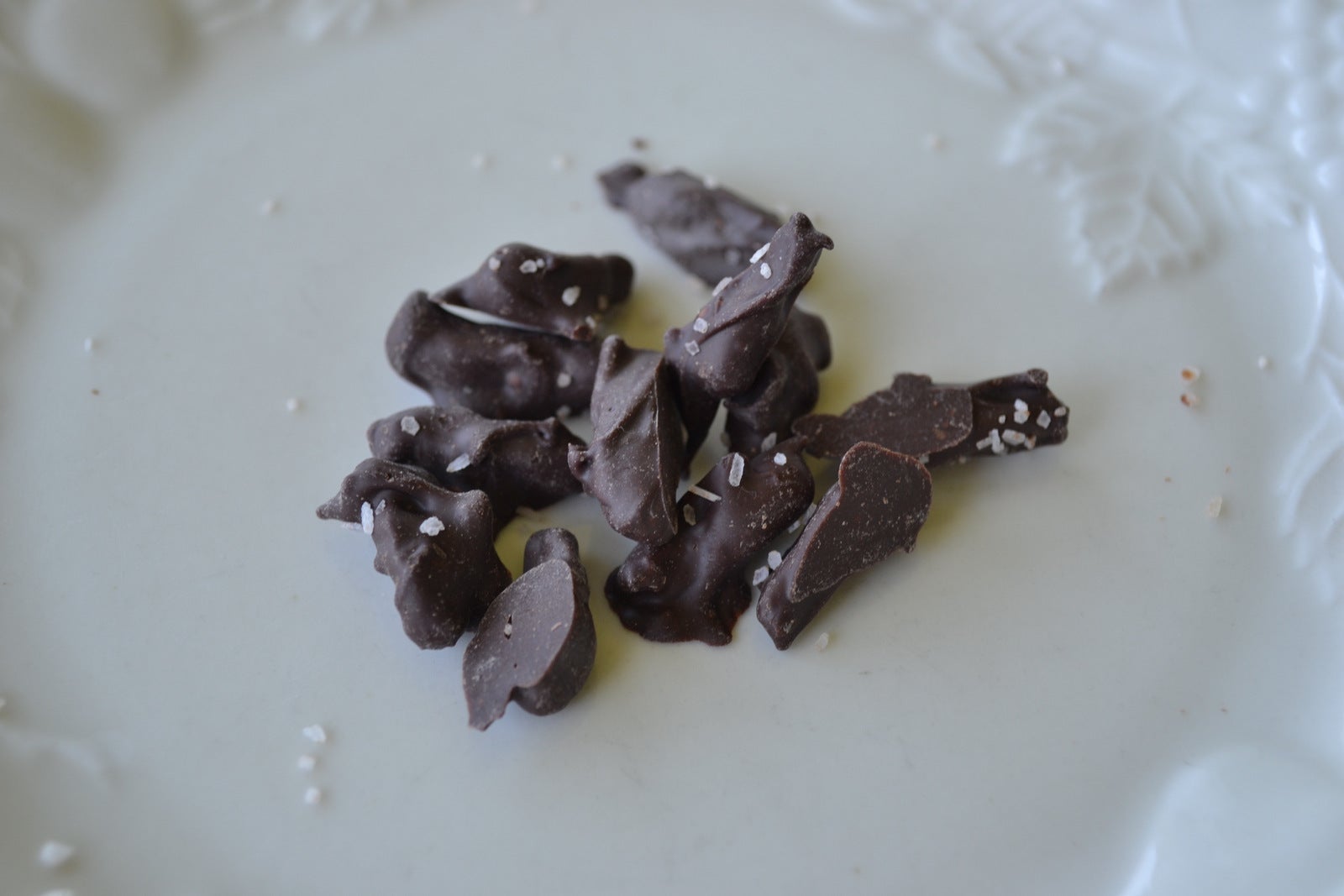
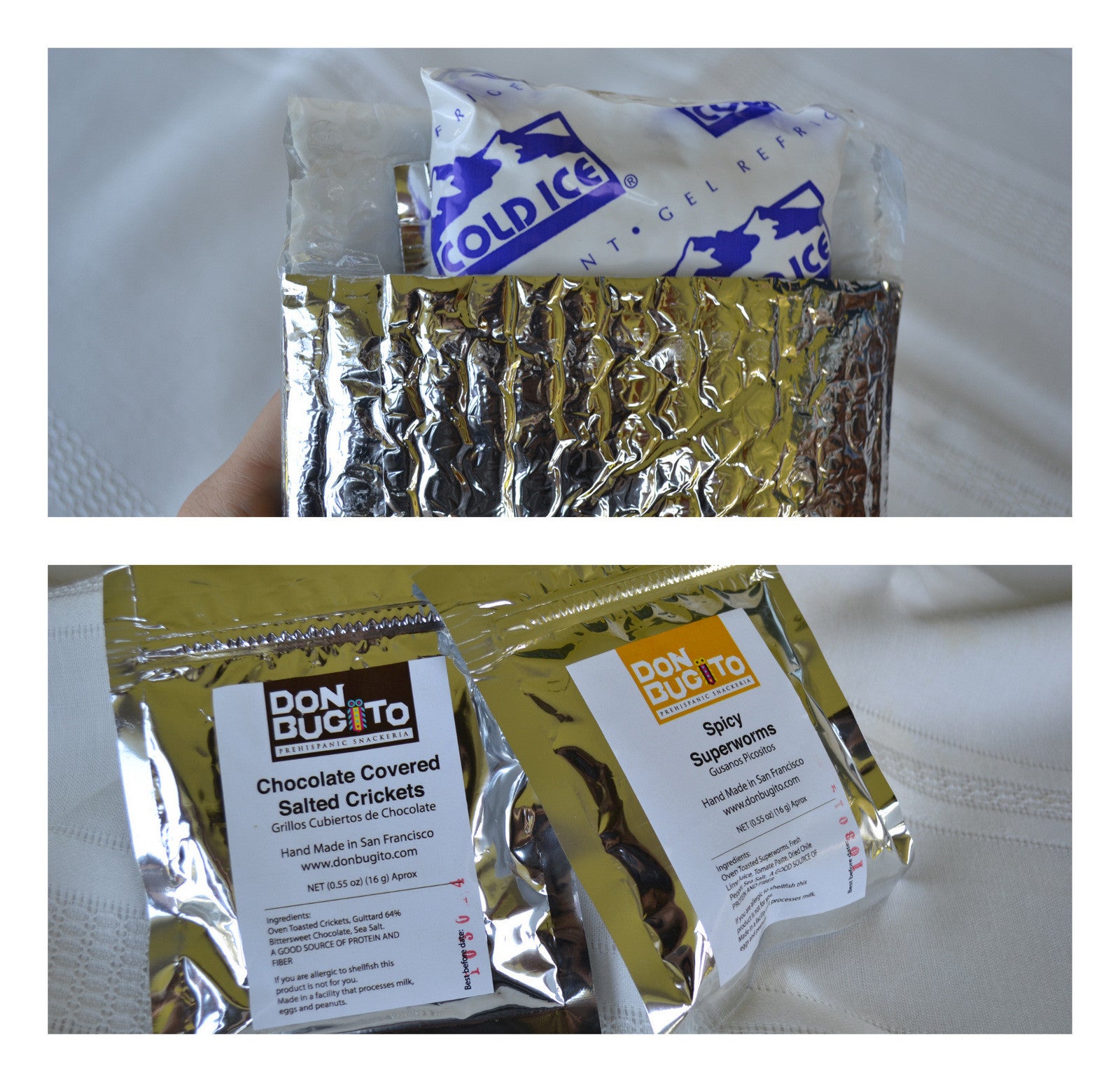
The samples from Don Bugito included a cold pack and insulated pouch to keep the chocolate from melting. Good call.
The crickets were a delight. Comments from my taste testers included “They kinda look cute,” “The crunch is pleasing and the parts don’t linger,” and “tastes like chocolate-covered shortbread.” Yes, I would gladly eat these again. I had to stop myself and save some for a brother that hadn’t arrived yet.
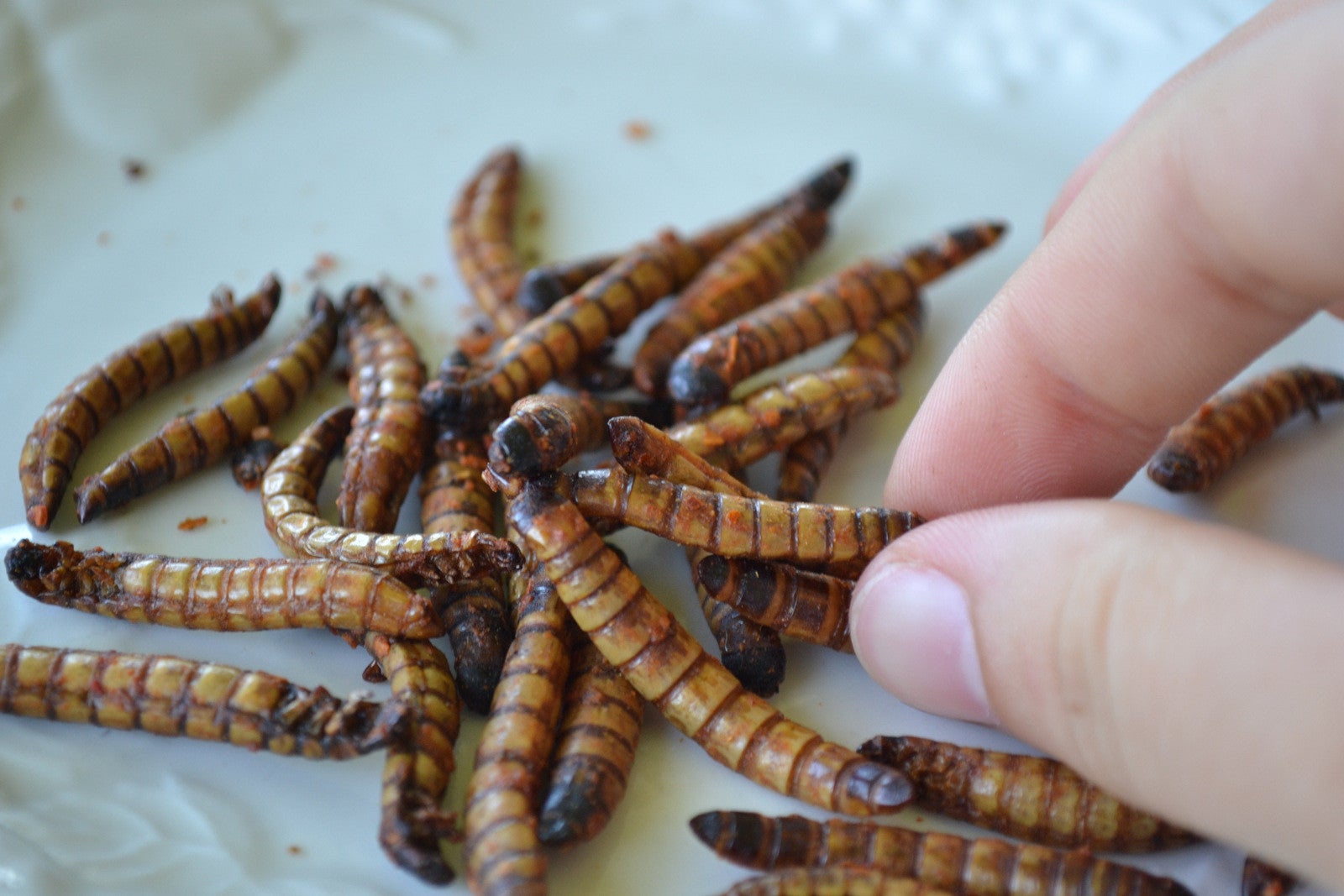
The superworms had quite a zing from the lime. One friend thought that they smelled a little overdone or burnt, but they were very crispy and actually had nice heat from the chili.
Thailand Unique
Next, we dove into a sample pack from Thailand Unique. This company has a dizzying array of edible insects, only a small fraction of which is presented here.
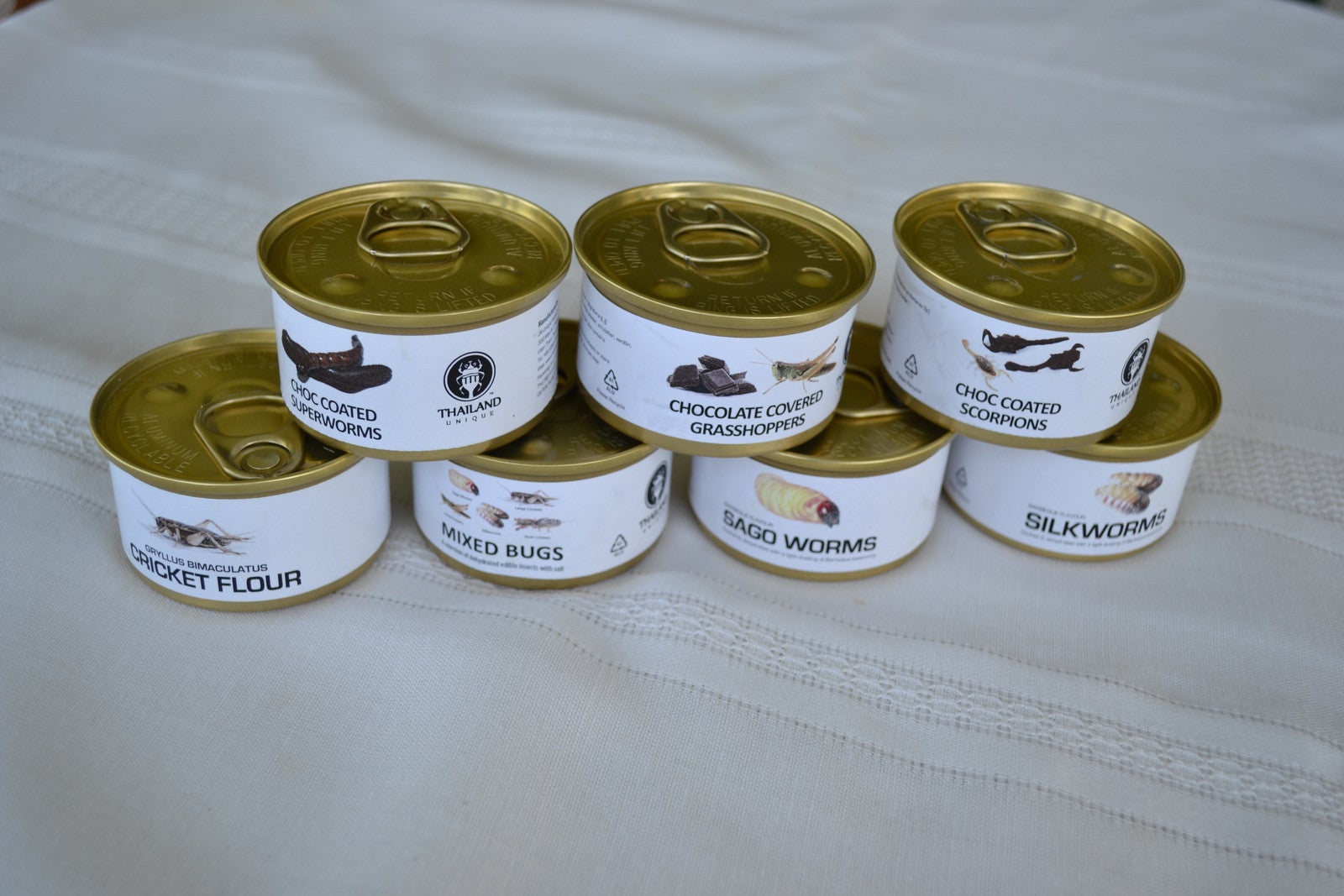
The containers are either classy (think caviar) or sort of like cat-food. At first I pictured wet bugs in some kind of sauce, but these barbecue-flavored insects are crisp and dry. Desiccant bags inside the cans keep them this way.
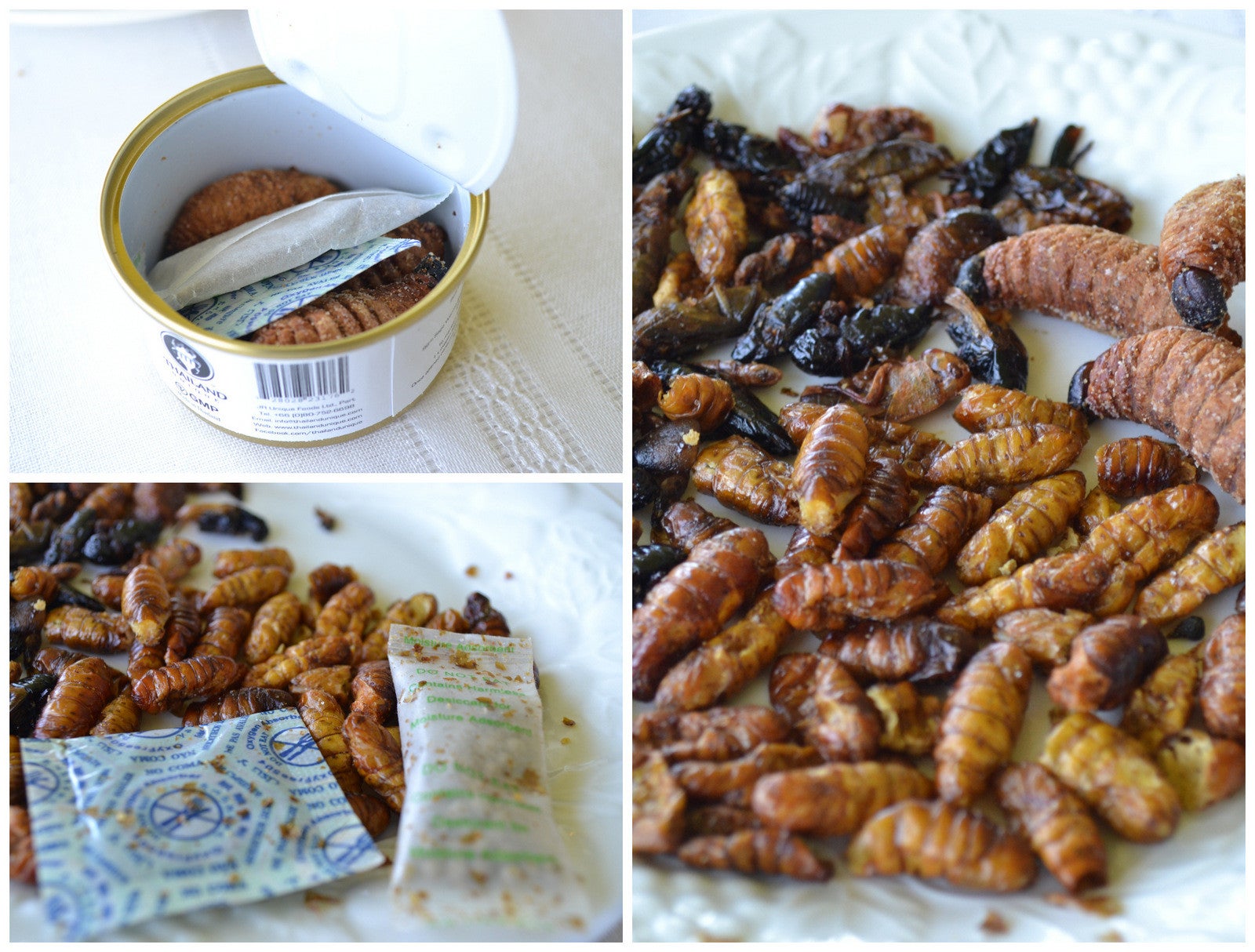
Ultimately, they all tasted somewhat similar: oily and fried, a little salty. There was very little barbecue flavor. We could only taste slight smoke and spice on the large sago worms, which also win points for being slightly terrifying. But once you bite in, they are mostly just crisp, a bit like fried pig skins.
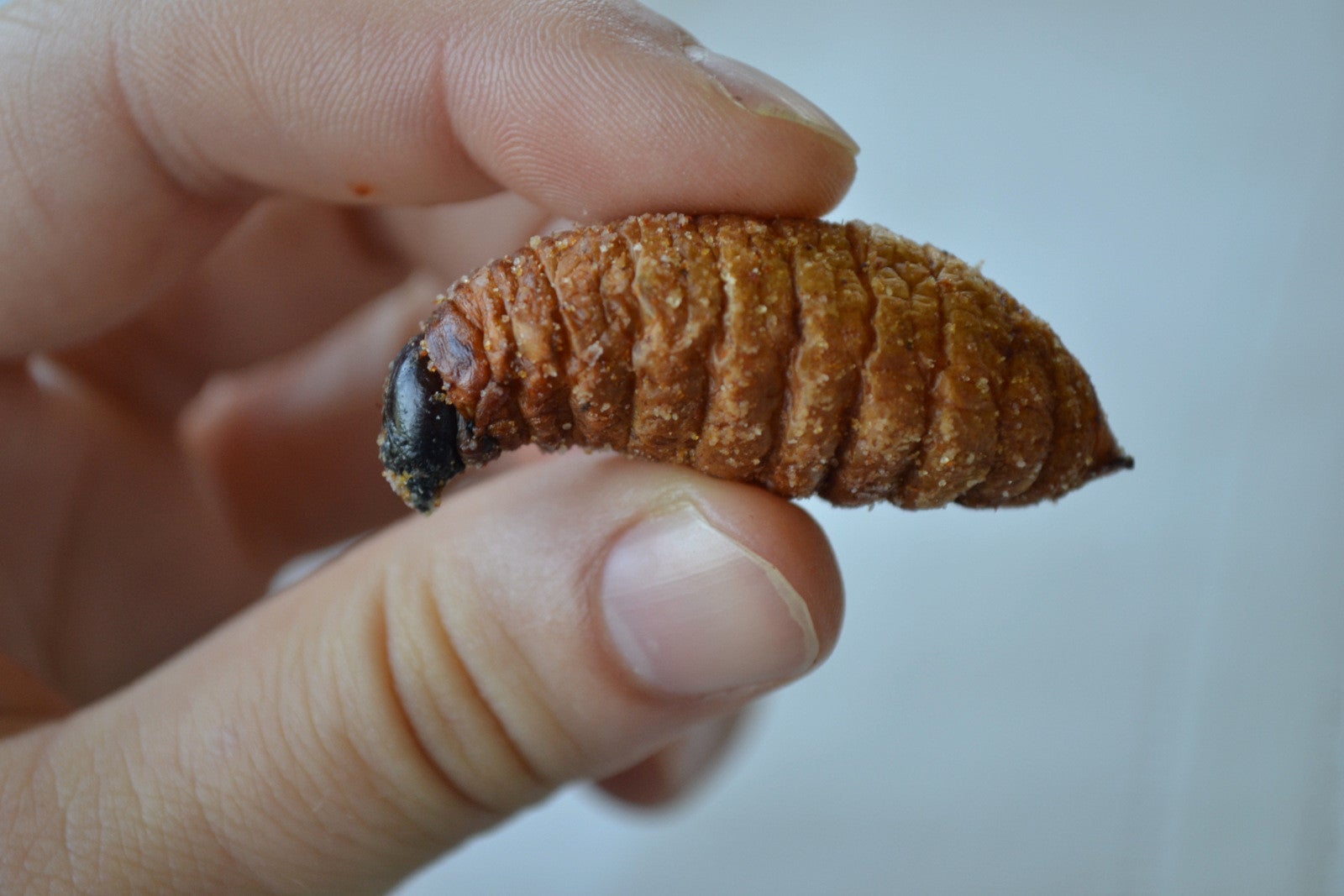
The silkworms were likened to stale popcorn with a slight taste of fish. It’s worth noting here that people who are allergic to shellfish should not eat insects—it’s the same allergy. The strongest taste for the crickets and grasshoppers we ate was of vegetable oil.
The chocolate-covered insects from Thailand Unique were more interesting.
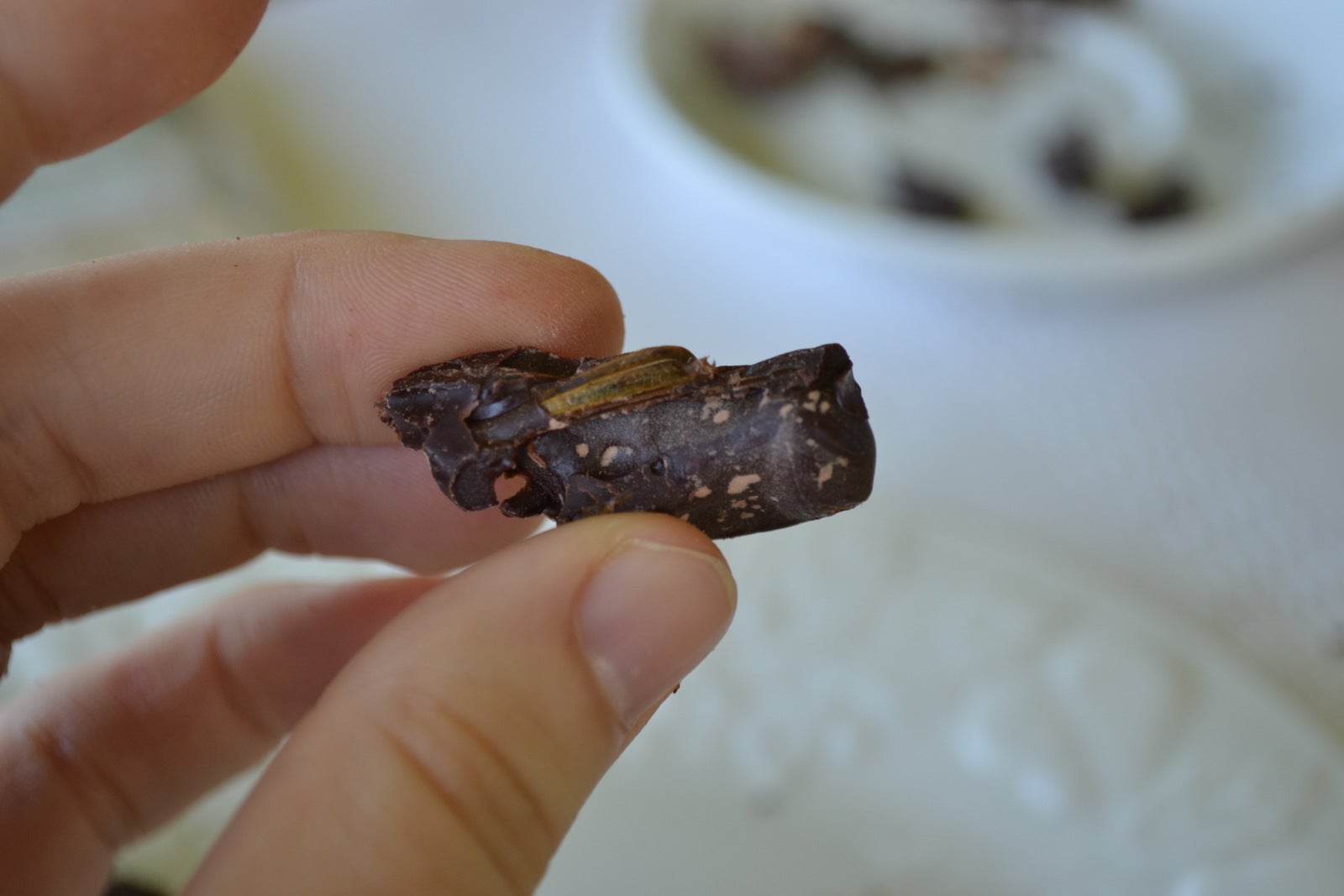
Everyone agreed that the grasshopper tasted like green tea or grass, which paired nicely with the chocolate. Sadly, all the Thailand Unique chocolate had melted at some point in my travels and congealed, so the bugs aren’t as pretty as they could be. Also, I missed taking a picture of the chocolate-covered mealworms, but they tasted exactly like Cocoa Krispies. Ah, childhood.
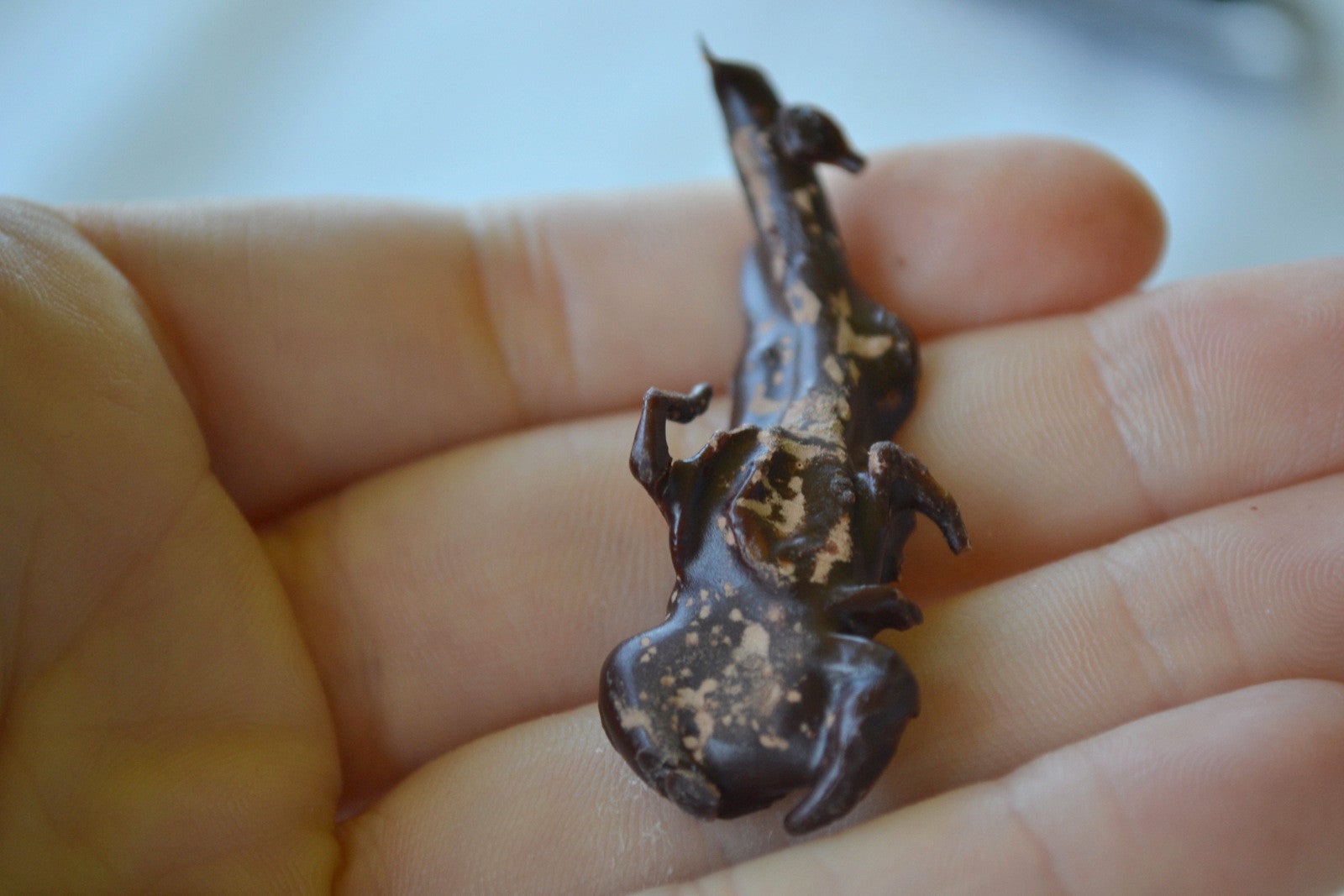
The chocolate-covered scorpions were great to look at. “There is definitely a bug in there,” my friend said. You can see claws and the stinger. But no worries, we did not feel insect parts snagging in our throats… too much. We chewed carefully. My brother and I agreed that these had a protein-powder-like taste behind the chocolate.
Lazybone
Finally, I got chocolate-covered giant ants and barbecue-flavored worm crisps from lazybone.co.uk. My total was £15.28 or $25.50, with shipping. I live in Cody, Wyo., and that’s a ways to ship from England.
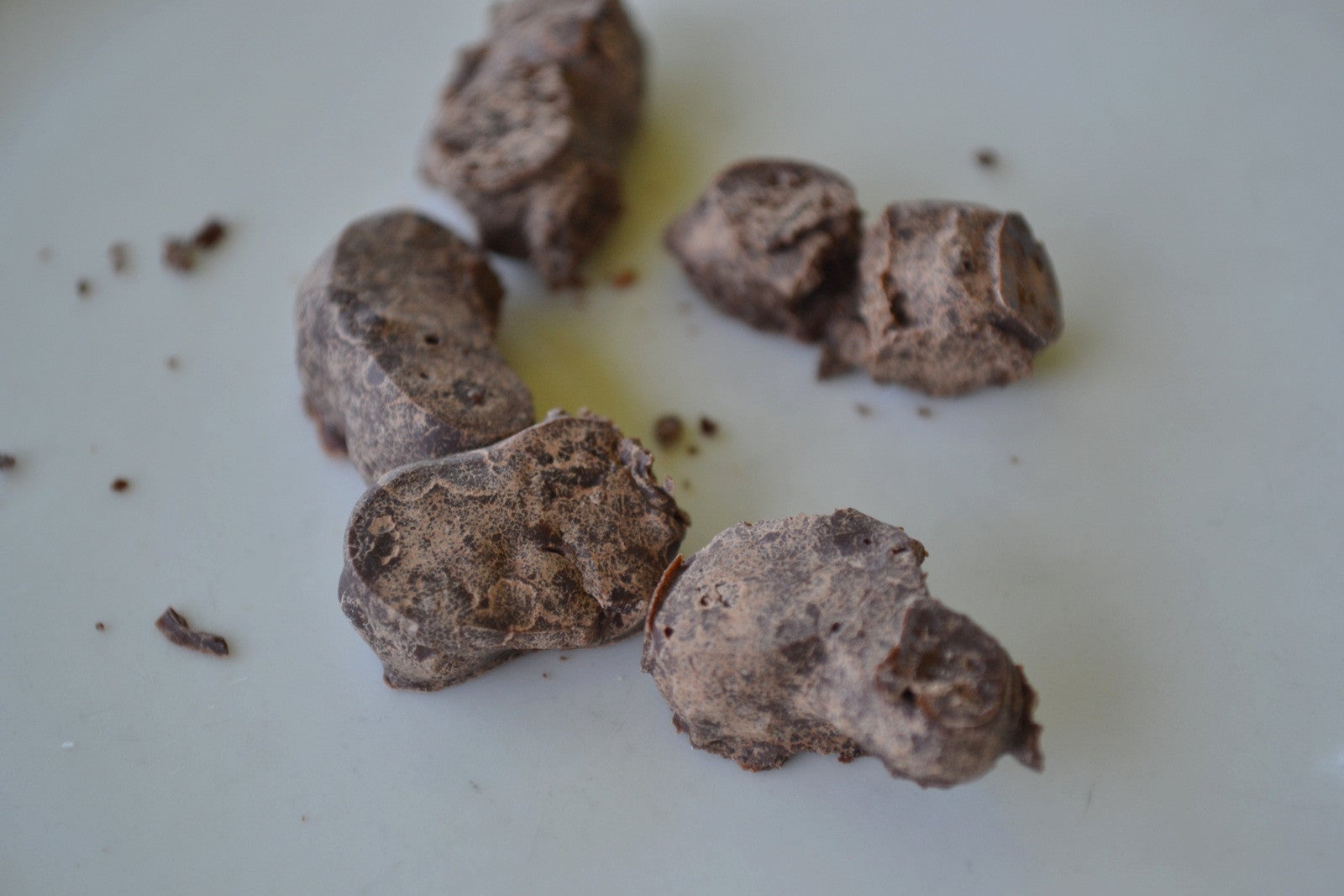
Again, these chocolates melted a little. But unlike the Thailand Unique samples, we were less thrilled with the taste. “Not my favorite thing covered in chocolate,” said one friend. They were salty and crunchy, and they had a lingering aftertaste described by different people as “dusty,” “like dirt,” “like cornsilk,” “sunflower seed with the shell on,” and “Turkish delight.” Not so sure about the last comparison myself, but I report what I hear.
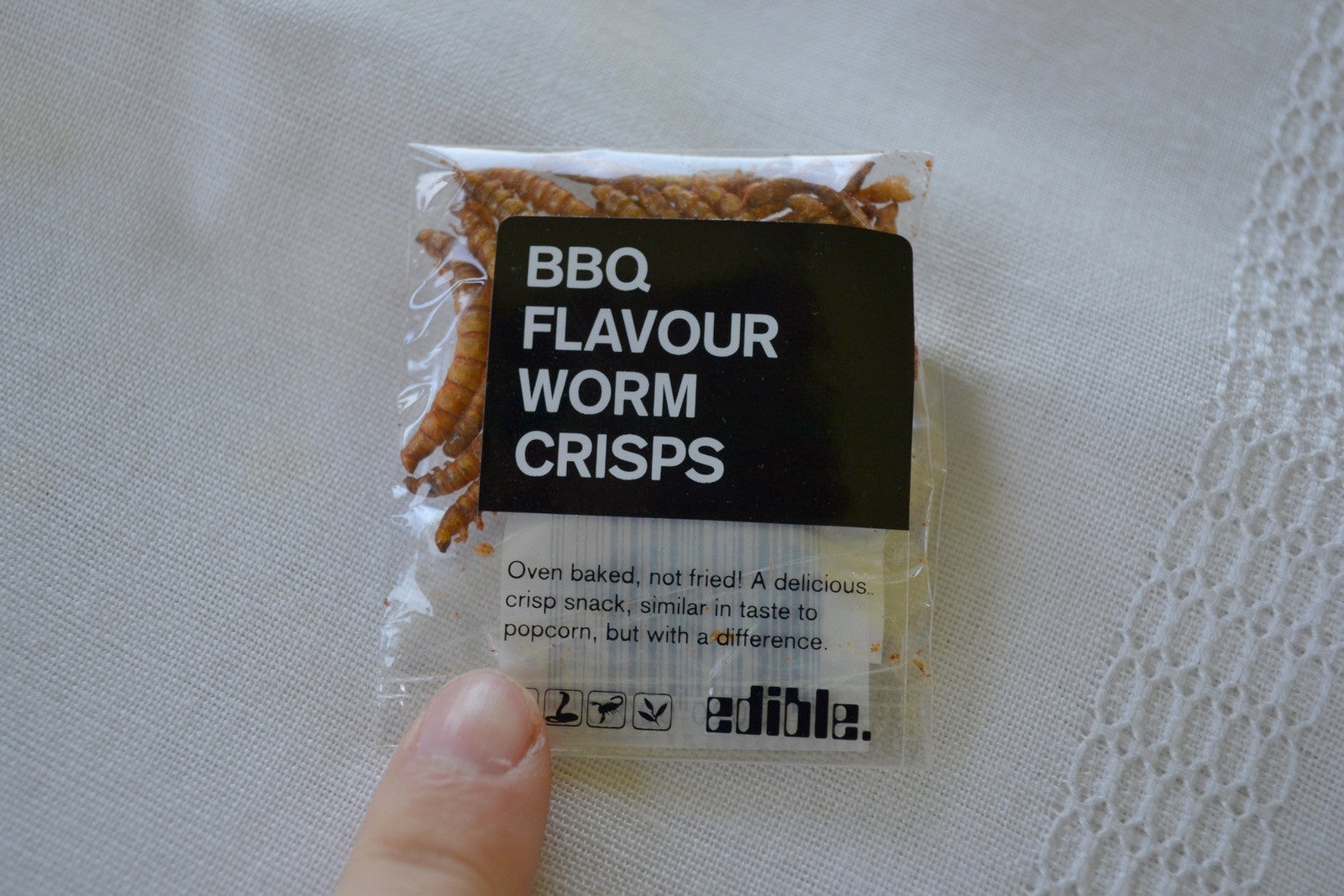
The barbecue-flavored worm chips didn’t have a lot of flavor. According to one report, they tasted like “puffed rice crackers” with a little hint of “meal or bran” and not much barbecue, but they weren’t altogether unpleasant.
•••
All in all, we thought tasting bugs and comparing our impressions was a ton of fun but a little expensive. And there are more insects out there and people figuring out how to get us to eat them: Tiny Farms, a Bay Area company, has made a kit that allows you to grow your own mealworms, and Chapul offers some tasty-looking energy bars that I wasn’t able to sample for this story.
The insects I ordered fall into two distinct camps: novelties for eating so one can crow “I ate bugs!” and foods that just happen to be made with insects. That latter group is the new-for-modern-American-culture one, the “let’s change the world” one that includes WorldEnto and Hopper Foods.
The problem with the first category is that they are slightly expensive and come in tiny quantities. Since their value lies in novelty, these treats generally don’t taste that great. True, chocolate-covered anything is tasty as long as you like chocolate, but most of the places I sampled had “meh”-quality chocolate. The exception was Don Bugito’s chocolate-covered crickets. I wanted to keep popping those chocolate covered crickets in my mouth like… well, candy. And the lime-chili superworms were tasty and zingy enough that I sprinkled some on top of my carnitas tacos that night.
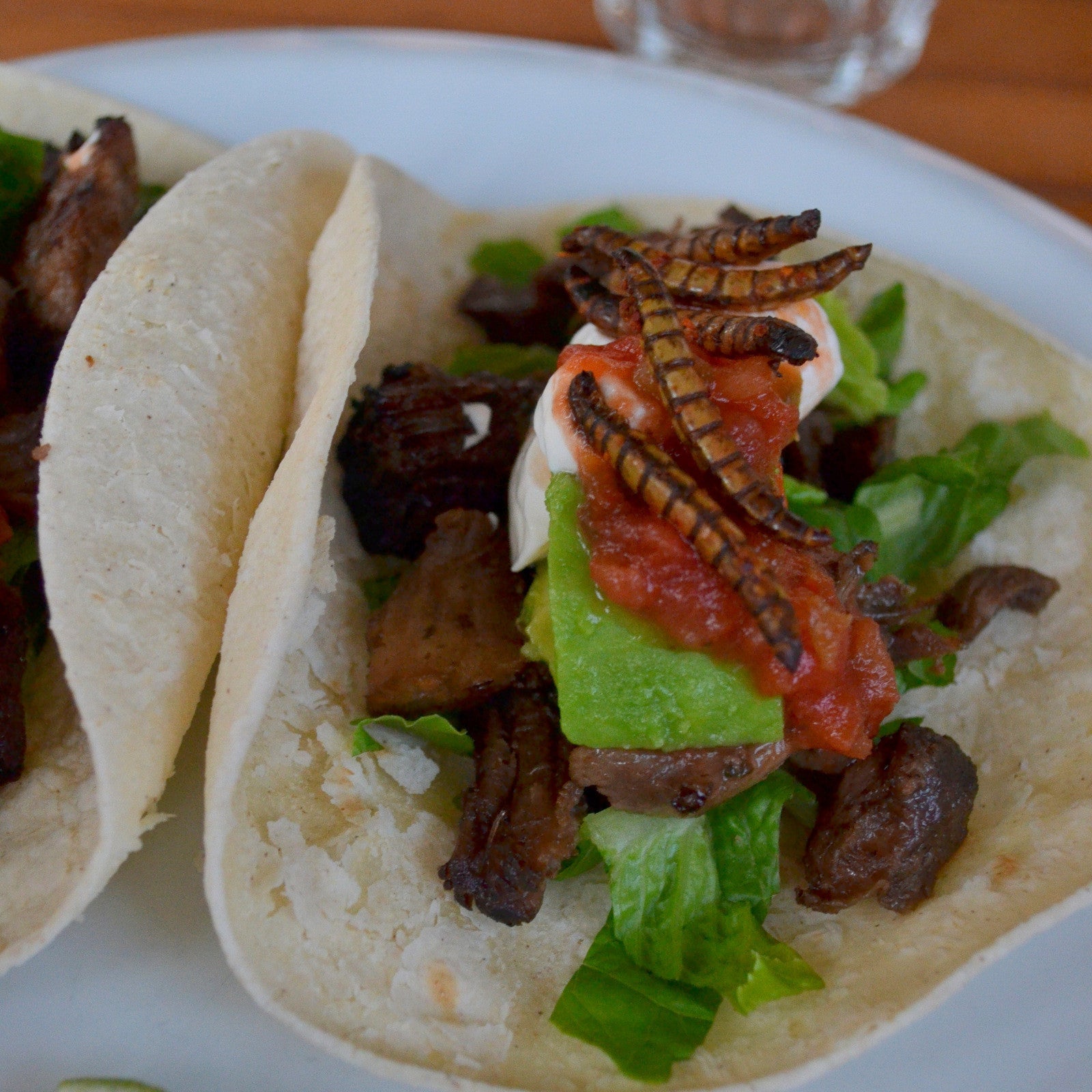
My dad looked askance at my plate, but I felt like I was eating in the future.
All photos by Marissa Fessenden | Photo via Man Bartlett (CC BY 2.0)
